|
|
|
|
The Original Concentration Camp Named "Auschwitz" |
|
 |
Inside the Camp The first reaction I had to Auschwitz was thinking how nice it looked. Before becoming a concentration camp, Auschwitz was a military base, bringing about a certain degree of order and symmetry to the buildings. All of the buildings are roughly the same size, color and distance apart. Seen better in photos below, giant poplar trees stand along the sides of the roads that run between the buildings. In the WWII photos of the camp, these same trees can be seen standing only fifteen to twenty feet high. Without knowing where I was, I would have guessed I was in a summer camp for children or viewing dorms for an old college. Despite the knowledge of what occurred in this area, the surroundings are actually quite pleasant.Enlarge Picture |
| Fences The beauty of Auschwitz is quickly lost when seeing miles of rusty barbwire fences that were used to prevent the escape by prisoners. Like the buildings, the fences also show signs of structure and order. The German people are known for their quality work, and the precision and craftsmanship of something as simple as a fence or guard tower (in the distance) is seen throughout the remains of places like Auschwitz.Enlarge Picture |
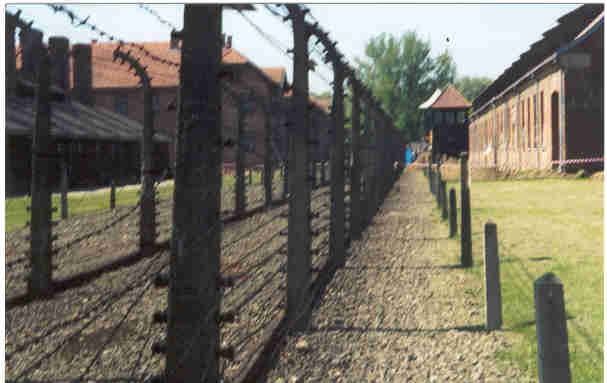 |
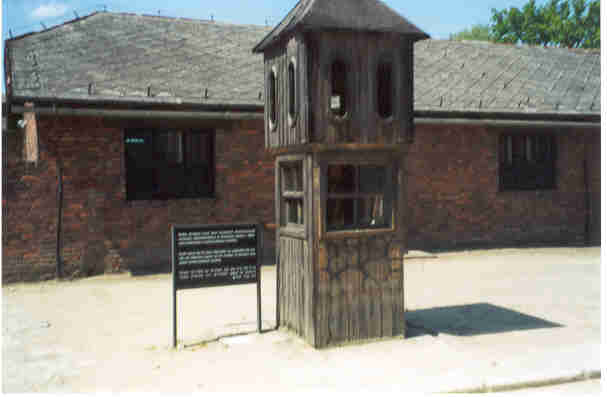 |
Guard Booth Our guide pointed out a cruel irony in the safety measures taken for the guards of Auschwitz. In this camp where so many people faced random and unexplainable killings, the guards were given the security of sheltered booths for the times when unpleasant weather made standing outside in the elements less than desirable. Enlarge Picture |
| Bomb Shelter The Germans took precations to insure the safety from attack of their guards working at Auschwitz. In case the Allies decided to bomb the camp, the soldiers working in Auschwitz were provided with shelter from the blasts. The shelters were never needed, as an attack from the Allies never came.Enlarge Picture |
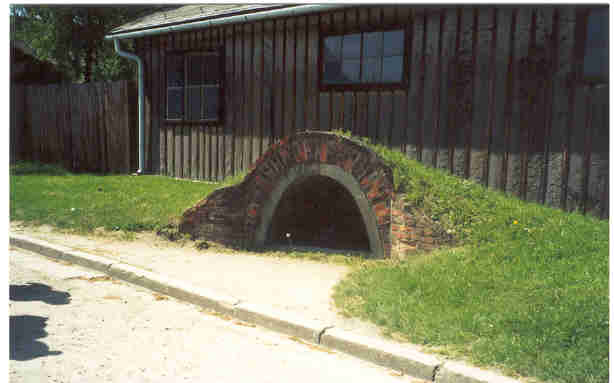 |
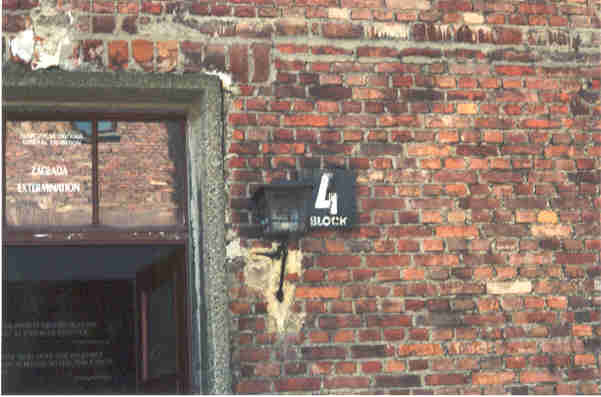 |
Block 4 The outside of a building for prisoners.Enlarge Picture |
| Workplace of Dr Josef Mengele Known as Auschwitz's "Angel of Death," Josef Mengele performed his work in this building. Mengele was one of the primary Nazis in charge of selecting which Jews survived more than one day at Auschwitz and which were sent immediately to the gas chambers. Many would argue that those killed immediately were luckier than those who found their way onto Mengele's list of prisoners to be used in experiments. Among other things, the Nazi doctor orchestrated and conducted experiments on people to determine how much blood a person could lose before death or how long a baby could survive without food.Enlarge Picture |
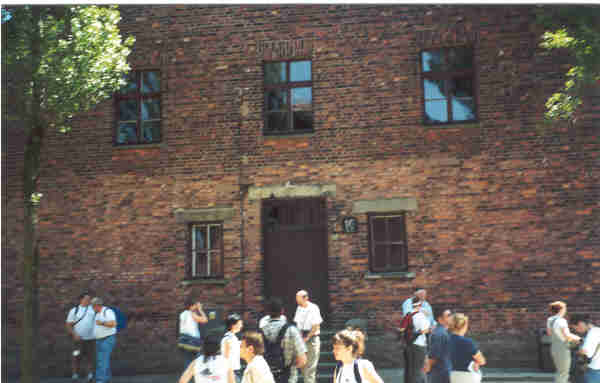 |
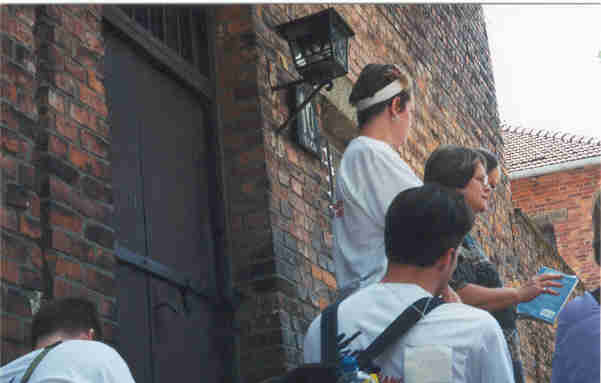 |
On the Steps of Mengele's Building Visitors are not allowed to enter the building once occupied by "The Angel of Death." Some say the reason people are prevented from entering is because normal people could not forget the horror on the inside. Of all the sights of The Holocaust, the workplace of Josef Mengele may be the one sight too harsh to be visited for historical reasons. On a trip where we saw a lot of things we will have a hard time forgetting, this is one we were spared from seeing. FYI, Mengele escaped justice after the war and found freedom (with many other Nazis) in Argentina, where he lived to be an old man.Enlarge Picture |
| Execution Wall This wall connects the last two buildings on the first row at Auschwitz-I. The two buildings and connecting wall create a small courtyard. Inside this courtyard is where most of the prisoners of Auschwitz-I were executed.Enlarge Picture |
 |
|
|
Inside the Courtyard This is a recreation of the actual spot where the prisoners were murdered. The prisoners were forced to remove their clothes, shower and stand in front of a firing squad who executed them with their family and building-residents watching. There were times when piles of bodies were stacked in this area, because the Nazis were killing people faster than they could remove them.Enlarge Picture |
|
Retribution |
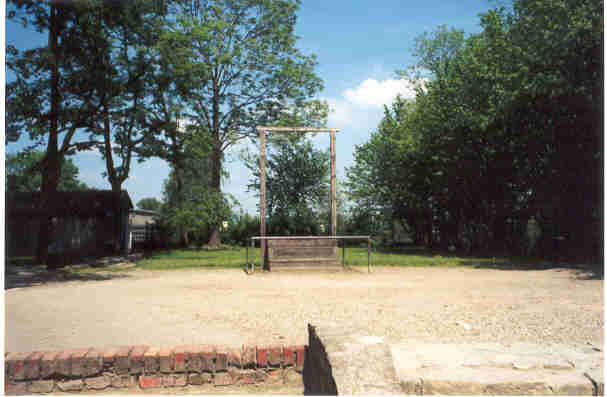 |